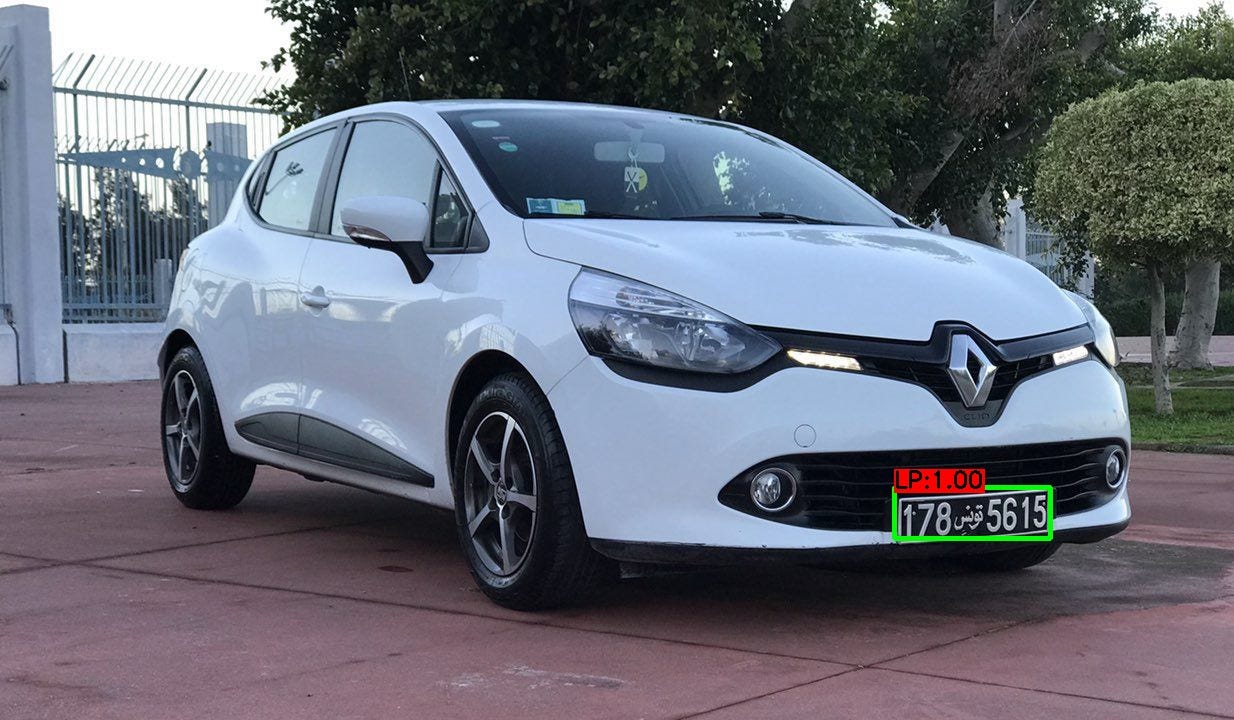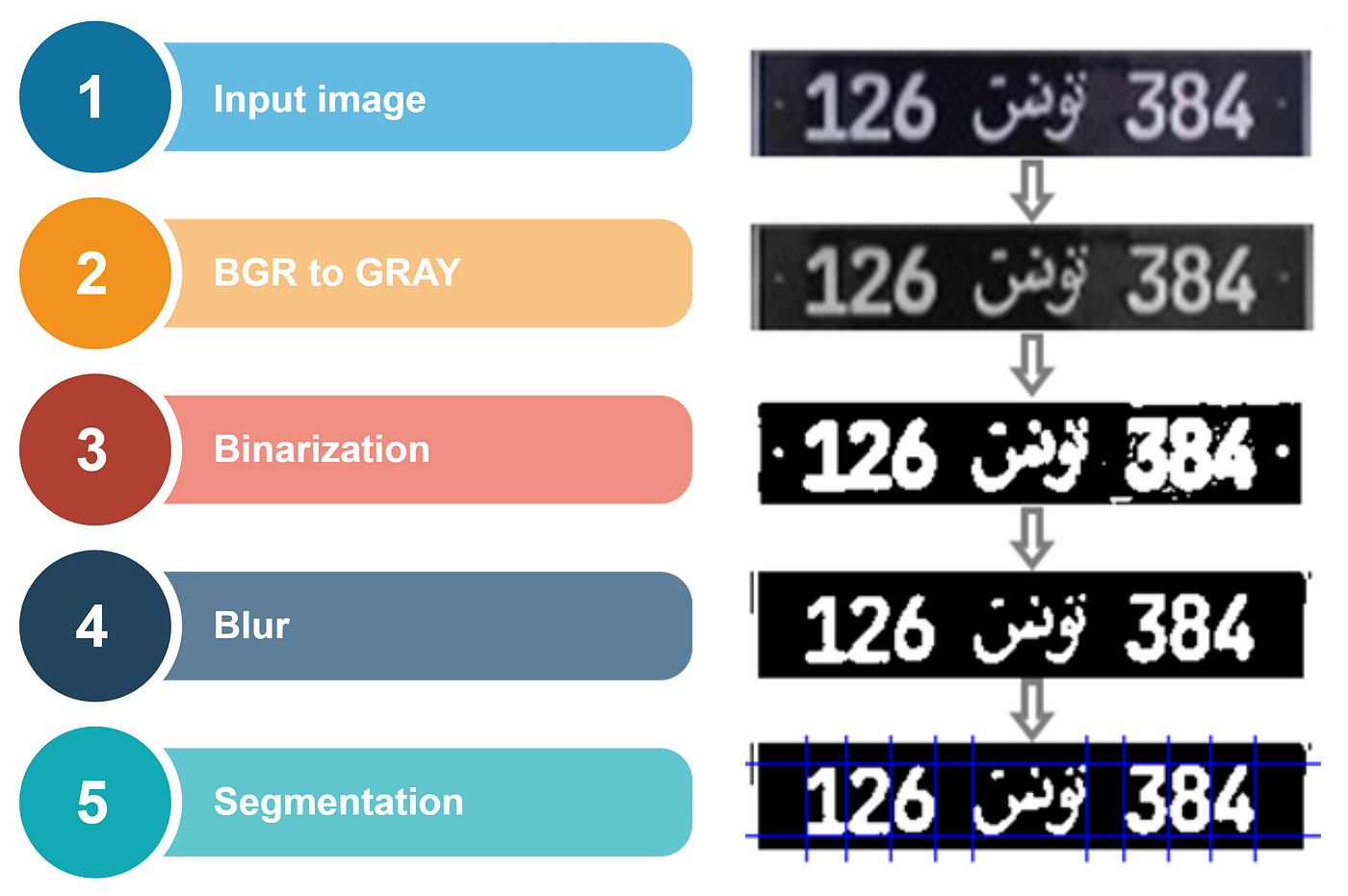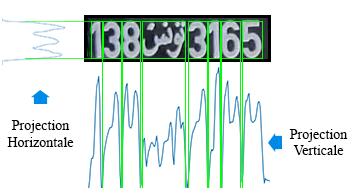How to Prevent Police From Reading License Plates
Automatic License Plate Detection & Recognition using deep learning
![]()
Introduction
The massive integration of data technologies, under dissimilar aspects of the modern world, ha s led to the treatment of vehicles as conceptual resources in information systems. Since an democratic data system has no pregnant without whatever data, in that location is a need to reform vehicle information between reality and the information system.This tin can be achieved by human agents or past special intelligent equipment that will allow identification of vehicles past their registration plates in real environments. Amongst intelligent equipment, mention is made of the system of detection and recognition of the number plates of vehicles.The system of vehicle number plate detection and recognition is used to detect the plates then make the recognition of the plate that is to excerpt the text from an image and all that thanks to the calculation modules that utilize location algorithms, segmentation plate and character recognition.The detection and reading of license plates is a kind of intelligent system and it is considerable because of the potential applications in several sectors which are quoted:
- Command force: This system is used for the detection of stolen and searched vehicles. The detected plates are compared to those of the reported vehicles.
- Parking management: The management of motorcar entrances and exits.
- Road rubber: This system is used to detect license plates exceeding a sure speed, coupling the plate reading organisation with road radar, crossing wildfires …
Our project will exist divised into 3 steps :
Step1 : Licence plate detection
In order to detect licence we will use Yolo ( You Just Await One ) deep learning object detection architecture based on convolution neural networks.
This architecture was introduced by Joseph Redmon , Ali Farhadi, Ross Girshick and Santosh Divvala start version in 2015 and later version two and three.
Yolo v1 : Newspaper link.
Yolo v2 : Newspaper link.
Yolo v3 : Paper link.
Yolo is a single network trained end to end to perform a regression chore predicting both object bounding box and object class.
This network is extremely fast, it processes images in existent-fourth dimension at 45 frames per 2nd. A smaller version of the network, Fast YOLO, processes an astounding 155 frames per second.
Implementing YOLO V3:
Offset, nosotros prepared a dataset equanimous of 700 images of cars that contains Tunisian licence plate, for each image, we make an xml file ( Changed later that to text file that contains coordinates compatible with Darknet config file input. Darknet : project used to retrain YOLO pretrained models) using a desktop awarding called LabelImg.
# First download Darknet projection
$ git clone https://github.com/pjreddie/darknet.git # in "darknet/Makefile" put affect 1 to OpenCV, CUDNN and GPU if you # want to train with you GPU then time thos two commands
$ cd darknet
$ make # Load convert.py to change labels (xml files) into the advisable # format that darknet empathise and past it nether darknet/
https://github.com/GuiltyNeuron/ANPR # Unzip the dataset
$ unzip dataset.nada # Create 2 folders, 1 for the images and the other for labels
$ mkdir darknet/images
$ mkdir darknet/labels # Convert labels format and create files with location of images
# for the test and the training
$ python convert.py # Create a folder under darknet/ that volition comprise your data
$ mkdir darknet/custom # Move files railroad train.txt and exam.txt that contains information path to
# custom folder
$ mv train.txt custom/
$ mv test.txt custom/ # Create file to put licence plate class name "LP"
$ touch darknet/ custom/classes.names
$ repeat LP > classes.names # Create Backup folder to save weights
$ mkdir custom/weights # Create a file contains information virtually data and cfg
# files locations
$ bear upon darknet/custom/darknet.data # in darknet/custom/darknet.data file paste those informations
classes = 1
train = custom/railroad train.txt
valid = custom/examination.txt
names = custom/classes.names
backup = custom/weights/ # Copy and paste yolo config file in "darknet/custom"
$ cp darknet/cfg/yolov3.cfg darknet/custom # Open yolov3.cfg and change :
# " filters=(classes + v)*3" just the ones before "Yolo"
# in our case classes=1, then filters=18
# change classes=... to classes=ane # Download pretrained model
$ wget https://pjreddie.com/media/files/darknet53.conv.74 -O ~/darknet/darknet53.conv.74 # Permit's railroad train our model !!!!!!!!!!!!!!!!!!!!!
$ ./darknet detector train custom/darknet.data custom/yolov3.cfg darknet53.conv.74
Later on finishing the training, to detectect u liscence plate from an image, cull the latest model from darknet/custom/weights , and put its path or proper noun in file object_detection_yolo.py, also we will use yolov3.cfg file, just in this file put # before preparation then nosotros desable training then run :
python object-detection_yolo.py --image= image.jpg and this what we have as a outcome :

Step2 : Licence plate segmentation
At present we accept to segment our plate number. The input is the image of the plate, we will take to be able to extract the unicharacter images. The result of this step, being used every bit input to the recognition phase, is of great importance. In a organisation of automatic reading of number plates.
Segmentation is one of the about important processes for the automated identification of license plates, because whatsoever other step is based on it. If the segmentation fails, recognition phase will not be correct.To ensure proper division, preliminary processing will have to be performed.

The histogram of pixel project consists of finding the upper and lower limits, left and right of each character. Nosotros perform a horizontal projection to discover the top and bottom positions of the characters. The value of a group of histograms is the sum of the white pixels along a detail line in the horizontal management. When all the values forth all the lines in the horizontal direction are calculated, the horizontal projection histogram is obtained. The average value of the histogram is and so used equally a threshold to determine the upper and lower limits. The central area whose segment of the histogram is greater than the threshold is recorded equally the area delimited by the upper and lower limits. Then in the same fashion we summate the vertical projection histogram but by changing the rows by the columns of the epitome to have the two limits of each grapheme (left and right).

Another approach to extract digits from licence plate is to use open/close morphologye to make some sorte of connected region so use connected component algorith to extract connected regions.
Step3 : Licence plate recognition
The recognition phase is the last step in the evolution of the automatic license plate reader system. Thus, it closes all the processes passing past the conquering of the image, followed by the location of the plate until the segmentation. The recognition must brand from the images characters obtained at the end of the segmentation phase. The learning model that volition exist used for this recognition must be able to read an image and to return the corresponding character.
In society to brand the most of the information available for learning, we cut each character indivudually by resizing it in a foursquare afterward applying the same image processing steps used before segmentation of the license plate. As a result, we obtained a set of of data composed of 11 classes and for each class we have 30–40 images of 28X28 pixel dimesion PNG formats; numbers from 0 to ix and the word in Arabic (Tunisia).
And then, we made some researches based on scientific articles that compare the multilayer perceptron (MLP) and the classifier Chiliad nearest neighbors (KNN). And as a upshot we have found that: performance is increased if the number of hidden layer neurons is also increased when using the MLP classifier and if the nearest neighbor number is also increased when using the KNN. the power to adjust the performance of the k-NN classifier is very limited here. But an adaptable number of hidden layers and adjustable MLP connexion weights provides a greater opportunity to refine the decision regions. So as a result, nosotros will choose the multilayer perceptron for this phase.

Github project repo link
ferrellovelinterst.blogspot.com
Source: https://towardsdatascience.com/automatic-license-plate-detection-recognition-using-deep-learning-624def07eaaf
0 Response to "How to Prevent Police From Reading License Plates"
Post a Comment